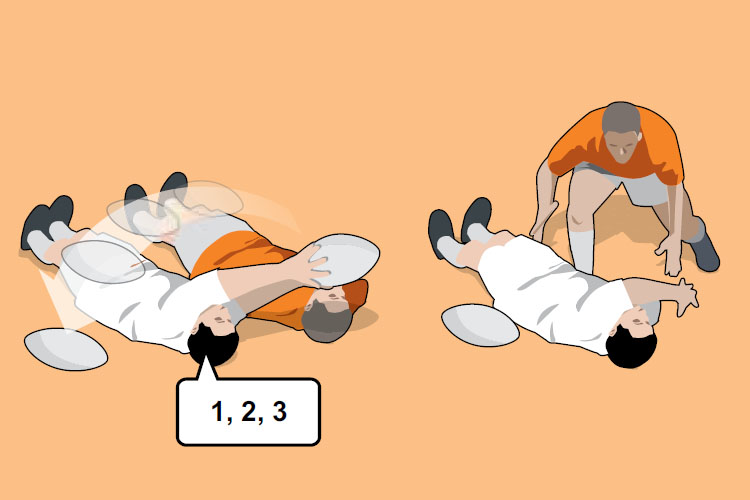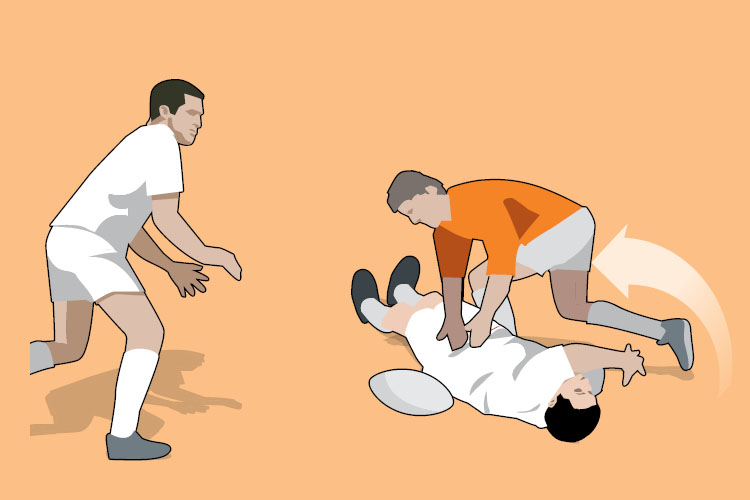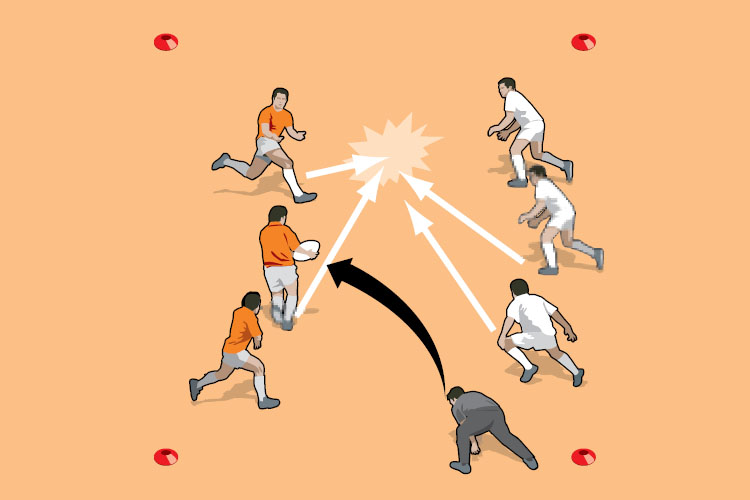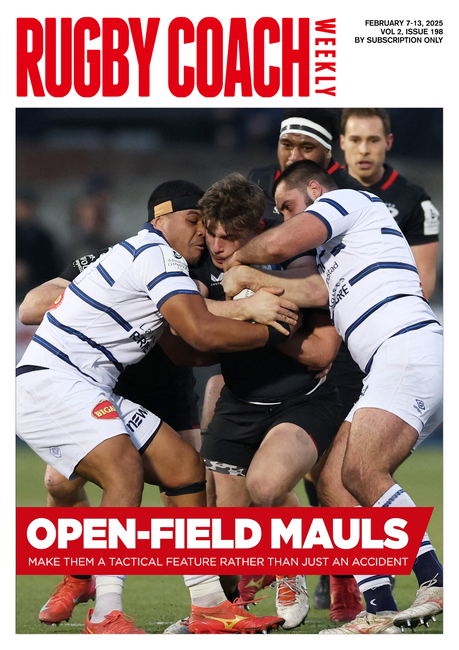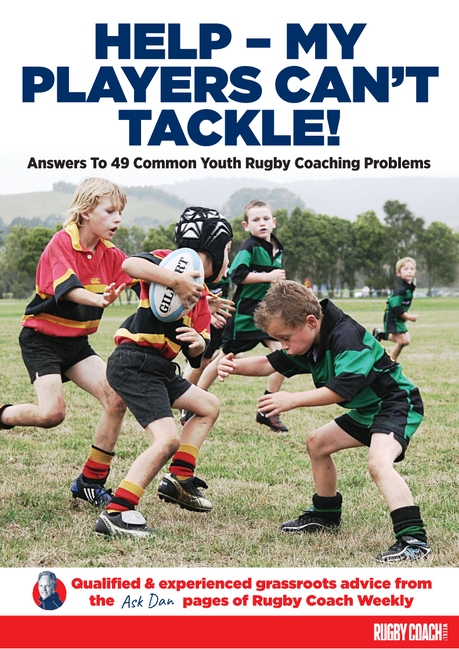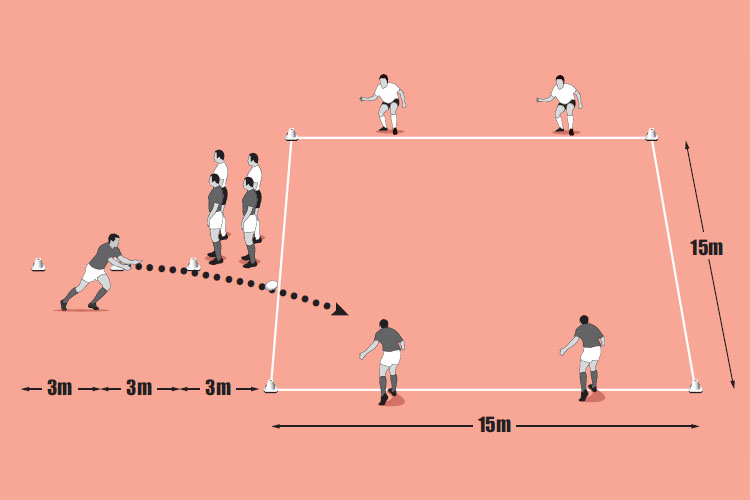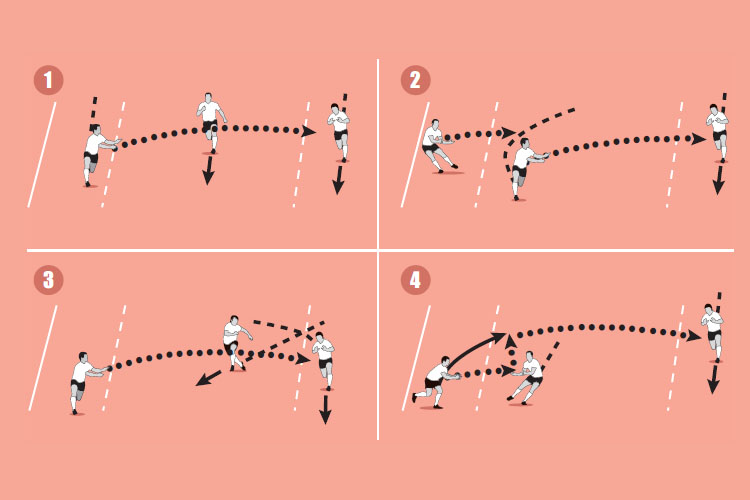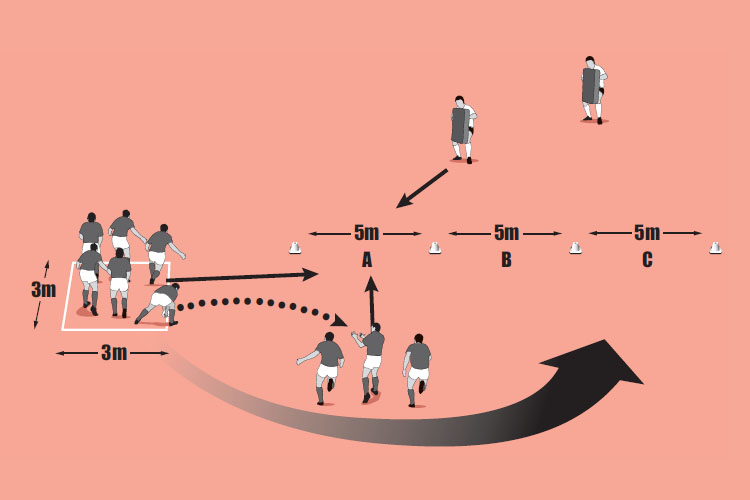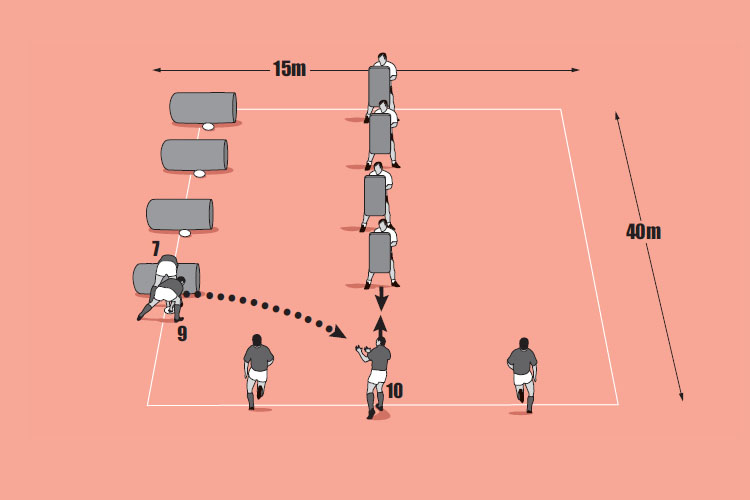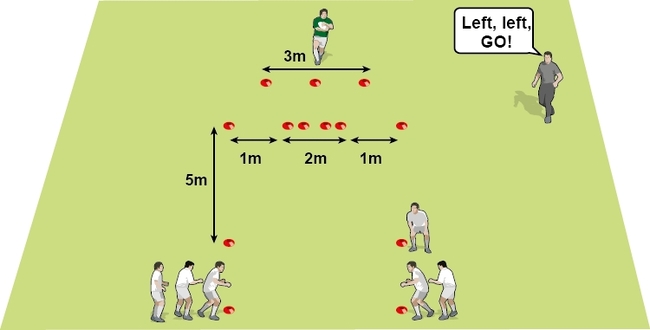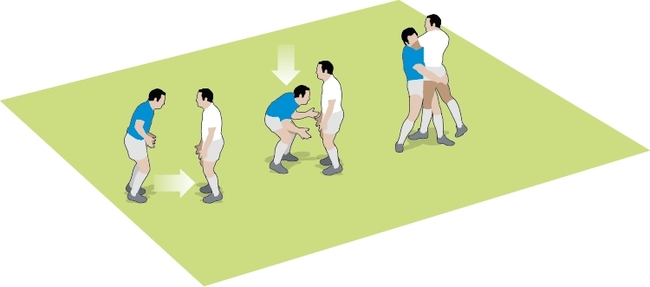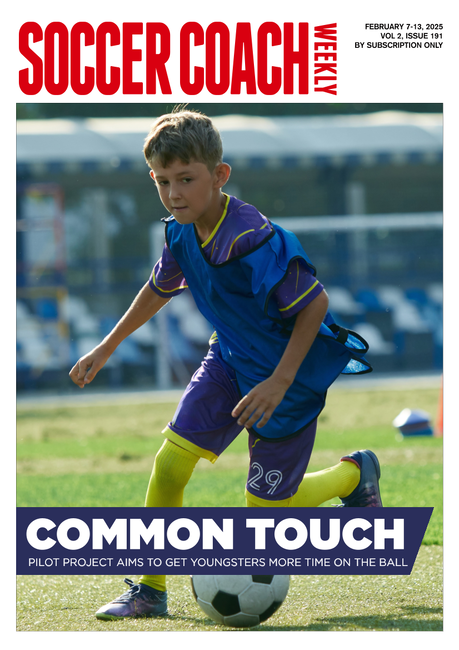Tackle ball
The tackler can play an important role in winning turnover ball, but only if he can get to his feet quickly after making the tackle. This sessions uses simple exercises to improve the reaction times of your tacklers. It will help them to get up and get back into the game, to “complete the tackle” and compete for the ball.
Warm up time: 5-7
Session time: 10-12
Development time: 8-10
Game time: 10-15
Warm down time: 5-7
What to think about
We have been working hard on winning turnover ball but now give away a lot of penalties. How can we cut down on our penalty count in this area? When competing for turnover ball, there is always a fine line between being legal and illegal. There is such a short time frame when you can legally pick up the ball that inevitably you will give away some penalties. Make sure your players know clearly the laws relating to the tackle and breakdown. The tackler must have clearly released the ball carrier before they compete for the ball and they must be on their feet. The tackler, like all players, must only go for the ball if they are coming into the tackle from their own side of the ball (through the "tackle gate"). In training, be especially harsh at enforcing the laws so players know exactly what they can and cannot do. Speak to the referee before the game and check how he is going to referee the breakdown. Then always play the referee: if he is not letting your players compete for the ball then don’t.set-up
- Get back to your feet as quickly as possible after making the tackle.
- Get hands on the ball and get the ball off the ground quickly.
What you get your players to do
Two players lie face up, side by side. The player without the ball (the “tackler”) closes his eyes. The ball carrier reaches over and touches the tackler with it. The ball carrier immediately turns and places the ball away from the tackler and starts a count of three seconds. The tackler has until the end of the count to get to his feet and pick up the ball. Make the count four or five if your players are struggling initially.Development
Add a support player for the ball carrier. He starts five metres away and can only move when the count starts. The support player moves forward and tries to disrupt the tackler from winning the ball. The tackler has to stay strong and protect the ball.Related Files
Game situation
Play three against three. Start the game by throwing the ball to one team who then have to protect it for 20 seconds by running or passing in any direction. The defending team have to tackle the ball carrier and compete for the ball on the ground. When a tackle is made only the tackler and one of the attacking team can compete for the ball. Change teams over frequently. Play “winning team stays on” to make the game more competitive.What to call out
- “You must be on your feet to touch the ball”
- “Get low and stay strong over the ball”
- “Get the ball off the ground as quickly as possible”
Premium Books
Newsletter Sign Up
Coaches Testimonials

Gerald Kearney, Downtown Las Vegas Soccer Club

Paul Butler, Florida, USA

Rick Shields, Springboro, USA

Tony Green, Pierrefonds Titans, Quebec, Canada
Subscribe Today
Be a more effective, more successful rugby coach
In a recent survey 89% of subscribers said Rugby Coach Weekly makes them more confident, 91% said Rugby Coach Weekly makes them a more effective coach and 93% said Rugby Coach Weekly makes them more inspired.
Get Weekly Inspiration
All the latest techniques and approaches
Rugby Coach Weekly offers proven and easy to use rugby drills, coaching sessions, practice plans, small-sided games, warm-ups, training tips and advice.
We've been at the cutting edge of rugby coaching since we launched in 2005, creating resources for the grassroots youth coach, following best practice from around the world and insights from the professional game.
